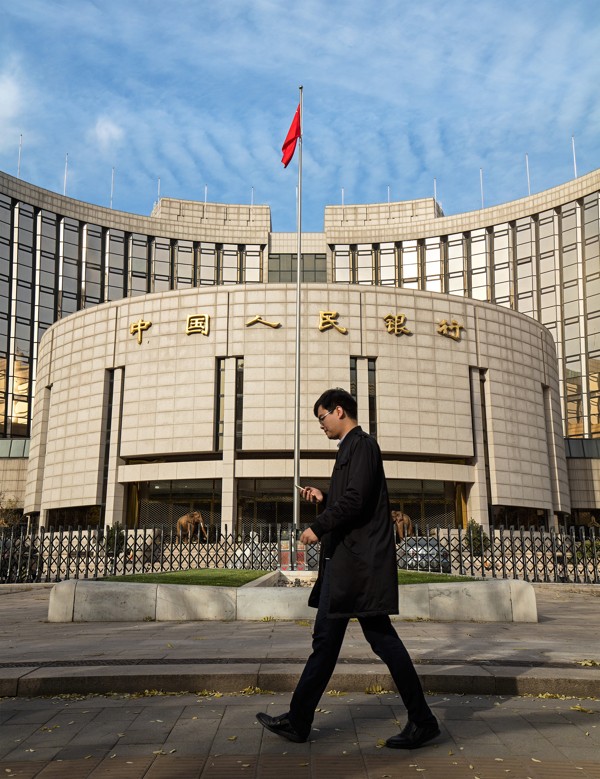
Mainland and Hong Kong stocks rally after Chinese central bank moves to stabilise the yuan
The Hong Kong and mainland China stock markets rallied on Monday, after the Chinese central bank signalled it would guide the market more proactively in the face of a stronger US dollar and the ongoing trade war between Washington and Beijing. Shares in the automobile sector also surged after Brilliance China Automotive Holdings posted better than expected interim results.
In Hong Kong, the Hang Seng Index rose by 2.2 per cent, or 599.40 points, to 28,271.27, its biggest daily rise since February 14. The Hang Seng China Enterprises Index also gained 2.5 per cent, or 269.42 points, to 11,049.13, marking its biggest daily increase since January 2.
After the stock markets closed on Friday, the People’s Bank of China said a component known as the countercyclical factor had been resumed in the setting of the yuan daily reference rate to counter depreciation. This caused the offshore yuan to rise to its highest level since July 31, although it subsequently reversed to a 0.09 per cent drop, to 6.8115 against the dollar, on Monday.
“The PBOC’s action to stabilise the yuan was today’s main driver of the stock market,” said Alex Wong Kwok-ying, director of Ample Finance Group. “But concerns remain over Hong Kong companies’ growth story.”
The Chinese currency is likely to find a floor at the above 7 yuan per dollar level for now, but trade tensions with the US have not gone away and another US$200 billion of Chinese goods could be hit with a 25 per cent tariff early next month, said Khoon Goh, head of Asia research at ANZ Bank. The market will still need to see how trade relations evolve, and how the Chinese economy responds to the recent easing measures, Goh added.
The Hong Kong dollar touched the lower limit of its permitted trading range at 7.8500 per US dollar on Monday once again, showing that capital outflow pressure from the city remained.
Elsewhere, Brilliance China Automotive Holdings surged by 14.7 per cent to HK$12.50 after reporting an interim net profit growth of more than 54 per cent. Other carmakers rose in tandem, with Geely Automobile Holdings advancing by 7 per cent to HK$17.50, becoming the best performing blue chip in the process. Guangzhou Automobile Group climbed by 6.8 per cent to HK$7.70 and Dongfeng Motor Group jumped by 5.2 per cent to HK$7.90.

The rally on Monday was also supported by gains recorded by stocks of mobile handset equipment makers and Chinese property developers.
Lens maker Sunny Optical Technology (Group) jumped by 6.7 per cent to HK$98.20 and Apple supplier AAC Technologies Holdings added 3.2 per cent to HK$85. But camera modules maker Q Technology (Group) slid by 7.5 per cent to HK$5.41 after announcing it had swung to a net loss of 51.3 million yuan (US$7.53 million) in the first half of 2018, as against a 202 million yuan profit for the same period last year. Turnover declined by 11 per cent yearly to 3.207 billion yuan in the first half.
Chinese property developers also fared well. Sunac China Holdings advanced by 6.7 per cent to HK$26.45, Agile Group Holdings rose by 5.1 per cent to HK$12.28 and China Resources Land increased by 3.1 per cent to HK$27.90.
China Construction Bank, meanwhile, rose by 2.9 per cent to HK$7.09, adding 61 points to the benchmark index.
Sinopec Corp climbed by 5.1 per cent to HK$7.90 after reporting a profit that rose by 115 per cent from a year earlier to 23 billion yuan in the second quarter. Credit Suisse said it expected the company to sustain this outperformance during the remainder of the year. PetroChina increased by 3.6 per cent to HK$6.01 and CNOOC was higher by 2.1 per cent at HK$13.62.
On the mainland, the Shanghai Composite Index gained 1.9 per cent, or 51.47 points, to 2,780.90. The CSI 300, which tracks the large caps listed in Shanghai and Shenzhen, increased by 2.4 per cent, or 81.23 points, to 3,406.57.
The Shenzhen Composite Index was higher by 2.5 per cent, or 36.38 points, at 1,496.71, and the Nasdaq-style ChiNext rose by 3 per cent, or 43.34 points, to 1,493.43 on Monday.

